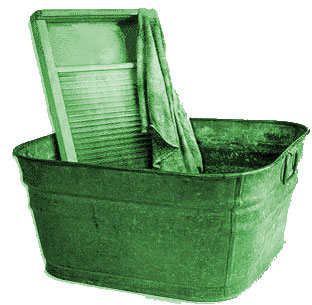 Many of you may have heard the term ‘Greenwashing’, yet, it is becoming more and more common in today’s marketplace. With the explosion of all things green, organic, natural, eco friendly, and environmentally conscious has come deceptive marketing. Greenwashing originally has been defined as ‘to market environmentally friendly behaviors or products with an underlying purpose of profit increase’, however it has morphed into a more underhanded marketing technique of promoting a product or feature as environmentally responsible when it has little to no affect at all. It can get very shakey around things such as automobiles, or products by which their very existance are damaging to the environment being marketed as ‘green’ in the relative sense of having less of an impact on the environment.
Many of you may have heard the term ‘Greenwashing’, yet, it is becoming more and more common in today’s marketplace. With the explosion of all things green, organic, natural, eco friendly, and environmentally conscious has come deceptive marketing. Greenwashing originally has been defined as ‘to market environmentally friendly behaviors or products with an underlying purpose of profit increase’, however it has morphed into a more underhanded marketing technique of promoting a product or feature as environmentally responsible when it has little to no affect at all. It can get very shakey around things such as automobiles, or products by which their very existance are damaging to the environment being marketed as ‘green’ in the relative sense of having less of an impact on the environment.
This is to be expected in a society where people tend to jump on bandwagons without taking adequate time and energy to explore what they are committing to. We become less discerning, or may not even know what the reasons why we are suddenly drawn to buying a certain way. Similar to the way fashion changes with the wind (I have some old day-glow and fluorescent jackets to prove it), we are sucked in by marketing and pop culture which can easily deceive us into believing we are doing something for a reason.
The classic, and perhaps defining greenwashing example is the hotel industry’s practice of placing green placards in each room promoting the reuse of towels to ‘save the environment’ when no effort was given to conserve, recycle or do anything different to back this claim. It was simply a way to cut laundering costs by promoting the guest to reuse their towels. While this does actually benefit the environment, the hotels were making no additional effort to ‘save the environment’.
A less observed and perhaps underlying example of greenwashing can be described by a package of smoked salmon I saw recently. The packaging read: “All Natural Supreme Pacific Salmon”, however upon closer inspection, the fine print read: “Farmed Atlantic Salmon”. Now how can this be? It seems like a blatant mis-representation of the product, and it is! Let’s start with “All Natural”. Natural is a vauge, undefined and unregulated term marketers like to use because it can describe just about anything, but portrays a sense of un-processed, wholesome, fresh product. To be a conscious consumer, you must learn to ignore this word because it is meaningless. Second, “Supreme Pacific Salmon” is the brand name, but its use as the headline spread across the product makes you believe that it is from the Pacific Ocean when in fact it is not. What makes this a greenwashing issue (in addition to misleading) is that many individuals avoid farmed salmon for environmental and health reasons. Farmed salmon is very impactful to the environment, and many employ antibiotics and growth hormones to increase production.
While greenwashing is beginning to penetrate all areas of our life, from food to home decor, bedding, clothing, electronics and automobiles, it is up to us as informed consumers to separate the true eco-friendlies from the spin. A great, and sometimes humorous resource for greenwashing is the greenwashing index, where users can post and rate greenwashing offenders.
Comments 13
Pingback: Eco Eliteism - Are you a Green Snob? | The Chic Ecologist
Pingback: Carbon Offsetting and Your Carbon Footprint | The Chic Ecologist
Pingback: Green Blogs and the Nature of Blogging | The Chic Ecologist
Pingback: Eco-apps green living environmental smart phone applications | The Chic Ecologist
Pingback: Antioxidant superfoods | The Chic Ecologist
Pingback: Eco Friendly Labels and Logos | The Chic Ecologist
Pingback: The Environmental Impact of Everyday Things | The Chic Ecologist
Excellent piece on greenwashing; I go through this every year trying to discern with media literacy vs. “eyes wide shut”…One of my favorite .org sites to further the convo is Sinsofgreenwashing pointing to the 7 biggies. I blogged about it from an eco teen’s perspective on Shaping Youth in this post about using eco as an equalizer: http://www.shapingyouth.org/?p=8136
Am late on my Earth Day post this year as I was outside enjoying spring…Will post a 40 link for 40th anniv. tips piece for kids and include this one, so thanks! 🙂
@ShapingYouth
Pingback: Shaping Youth » 40th Earth Day: 40 Eco Links Worth Recycling to Friends
Pingback: Ethically Sourced Wedding | The Chic Ecologist
Pingback: How to Tell the Green from the Guile | Modern Eco Homes
Pingback: Natural and Organic Mattresses | The Chic Ecologist
Pingback: How Green is Bamboo Clothing? | The Chic Ecologist